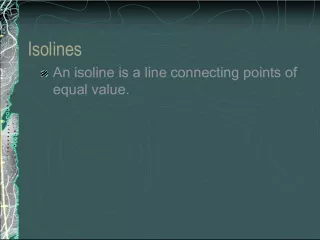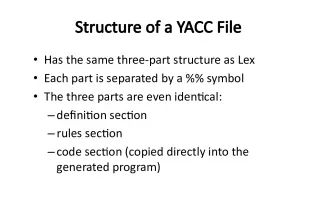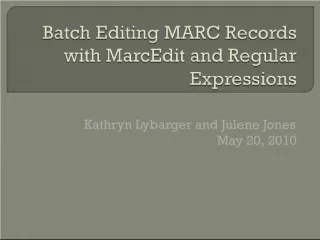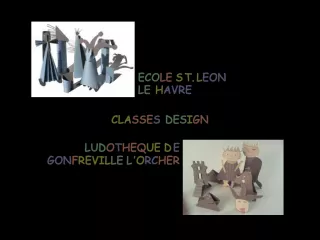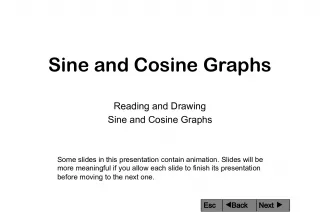Creating Nodes in Autocad Drawing Using DXF File


In this tutorial, we will show you how to create nodes in an Autocad drawing using a DXF file. First, we will open the DXF file in
- Uploaded on | 1 Views
-
 nick
nick
About Creating Nodes in Autocad Drawing Using DXF File
PowerPoint presentation about 'Creating Nodes in Autocad Drawing Using DXF File'. This presentation describes the topic on In this tutorial, we will show you how to create nodes in an Autocad drawing using a DXF file. First, we will open the DXF file in. The key topics included in this slideshow are . Download this presentation absolutely free.
Presentation Transcript
Slide1UsingStart with a DXF file
Slide2Original drawingIn Autocad drawing, create a new layer and using pdmode 35, pdsize 0.3 place points where you want a node . The size of the point (pdsize) may be changed to fit the drawings scale.
Slide3Nodes• Nodes (= points) were added. Now turn off all layers except the new point layer.
Slide4Save as block Using the wblock command, save it as a drawing. Open the new drawing and connect each point with a line (=elements).
Slide5Connect nodes• Then using dtext, add node labels including suffix which identifies nodes with external forces , supports etc., see manual.
Slide6Add labels• Save the drawing as a DXF file and open Cofea. Use the Cofea File menu Input from DXF drawing and enter the Cofea File name and Title.
Slide7New fileIn this case the Cofea File name is H3 and default Title H3 hanger for electroplating
Slide8From DXFThen using the Cofea Command Input from DXF , insert the DXF file it into Cofea
Slide9that is, select a file and click O.K
Slide10Partial view of Cofea Input fileCofea version 14.0, inch hanger for porcelaine industry from DXF ================================================================== 0 MATERIALS : matype index : description des.press. des. temp. io ii k E cold Poisson Az Ay At E hot exp/con % Wz Wy Q weight1 weight2 Jz Jy K ================================================================== 26 NODES label x y z 1 45 12.1766 3.8292 0 2 25 2.0162 1.9454 0 3 15 0.2213 1.8002 0 4 20 1.2301 1.8788 0 5 5.r 1.0205 0.2026 0 6 10 0.2213 0.2159 0 7 30 2.0162 2.3502 0 8 35 2.8939 2.4288 0 9 40 12.1839 2.8362 0 10 105 22.5654 3.7281 0 11 85 21.7077 6.0929 0 12 75 20.7176 6.1044 0 13 80.e 21.2011 6.231 0 14 65 20.1477 5.2298 0 15 55 19.6929 4.9767 0 . . . Before you can blink, all data for nodes and elements are created and also tables for supports and external nodes.
Slide11Adding data for materialThe Hanger is constructed from the above materials: Rod (Fig.1) and two rods welded together (Fig.2). The latter is inserted as a cross section (Fig.2) and longitudinal section (Fig.3) Properties of these sections have been calculated using Inertia program, and stored in files aRod.txt, Double.txt, DoubleY.txt. Fig. 1 Fig.2 Fig.3
Slide12the cross section (fig.2) applies to beams 20-25, 30-35, 110-115, 120-125.The longitudinal section (Fig.3) applies to columns 25-30 and 115-120 The remaining elements are made of a round bar, see Fig. 1 on previous slide.
Slide13Fillet weld is entered into joint propertiesThe fillet weld is applied to the end nodes of elements 45-40 (element 7), 55-60 (element 26) and 100-105 (element 16). The element numbers are as from the input table, see previous slides.
Slide14Data for all sections has been prepared using the Inertia program . Just select file and click O.K.
Slide15A partial view of a Cofea file afterMaterial input Cofea version 14.0, inch hanger for porcelaine industry from DXF ================================================================== 3 MATERIALS : matype index : Description des. press. des. temp. io ii k E cold Poisson Az Ay At E hot exp/con % Wz Wy Q weight1 weight2 Jz Jy K ------------------------------------------------------------------ Matl. 1 : 1 : Rod for hanger H3 0 70 1 1 1 27.9e6 0.3 0 0 .19635 27.9e6 0 .012272 .012272 .024544 -.055764 0 3.0679e-3 3.0679e-3 6.1359e-3 ------------------------------------------------------------------ Matl. 2 : 1 : Double two rods welded together for hanger H3 0 70 1 1 1 27.9e6 0.3 0 0 .43237 27.9e6 0 .060883 .029811 .063087 -.12279 0 .030383 7.5412e-3 .023037 ------------------------------------------------------------------ Matl. 3 : 1 : DoubleY two rods welded together as column for H3 0 70 1 1 1 27.9e6 0.3 0 0 .66 27.9e6 0 .0484 .165 .17195 -.18744 0 .010648 .12375 .1344 ==================================================================
Slide16A partial view of a Cofea file afterjoint prop’s input ================================================================== 1 JOINT prop's (swap function 0 = no, 1 = larger SIF, 2 = swap) swap io ii k name Az Ay At Wz Wy Wt ------------------------------------- Jp# 1 : 1 : fillet weld 2/32" for hanger H3 reinforcement rods 1 1 1 1 fw1 0 0 .1615 .021103 .021103 .042206 ================================================================== 6 JOINTS (location loc=0 @ from node, loc=1 @ to node) joint Jp# elmt loc label 1 1 7 0 w1 2 1 7 1 w2 3 1 26 0 w3 4 1 26 1 w4 5 1 16 0 w5 6 1 16 1 w6 ****************************************************************** Now, when the most tedious and error prone work is done, we only have to specify the External forces and edit the Elements to show the selected material number and Welds to show the applicable element number. Now you are ready to RUN Cofea and review the output.
Slide17Cofea Control of ComputationIn this example of Cofea RUN, we requested a calculation to be processed for external loads and we requested a printout of global displacements, element stress and load summary. Complete input file, H3edited, is in the Cofea folder Examples.
Slide18Maximum stress table• Output block: H3edited.cio • Processed for: Ext.l. cold • Header for stress: shear z' shear y' ten/comp • element node bending z' bending y' torsion • . • . • . • ------------------------------------------------------------------ • 14 Rod 90 0 0 1105 • Mohr 1676 570 0 0 • lambda=4 95 0 0 1105 • Mohr 16425 15319 0 0 • ------------------------------------------------------------------ • 15 Rod 95 0 0 1976 • Mohr 17295 15319 0 0 • lambda=3 100 0 0 1976 • Mohr 23163 21186 0 0 • ------------------------------------------------------------------ • 16 Rod 100 0 0 76 • Mohr 15151 15075 0 0 • lambda=10 105 0 0 76 • Mohr 3988 3911 0 0 • ------------------------------------------------------------------ • . • . • . • Maximum resultant stress 23163 at element 15 node 100 • Maximum longitudinal stress 23163 at element 15 node 100 • Maximum tension 3102 at element 18 node 110 • Maximum compression -3102 at element 23 node 105
Slide19Stress reportMaximal resultant stress 23163 appeared to be located at node 100. Allowable stress for assumed steel A36 for this type of loading is 15300 psi. Therefore, the hanger as is, can not be certified for 160 #. Recommendation : increase the rod diameter from 0.5” to 9/16" while keeping the same geometry.
Slide20The END• And yes, it works in 3 D too !

